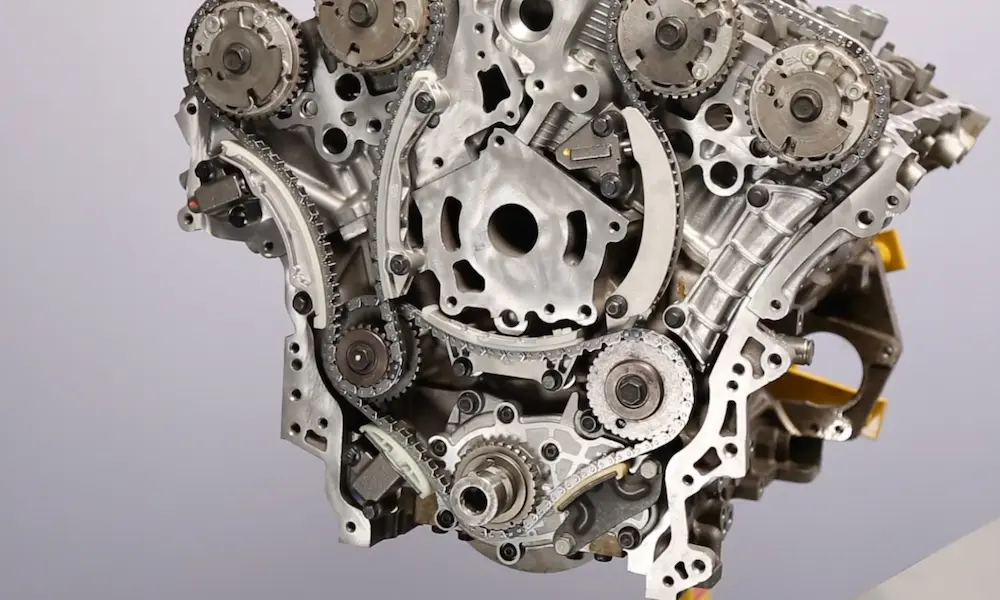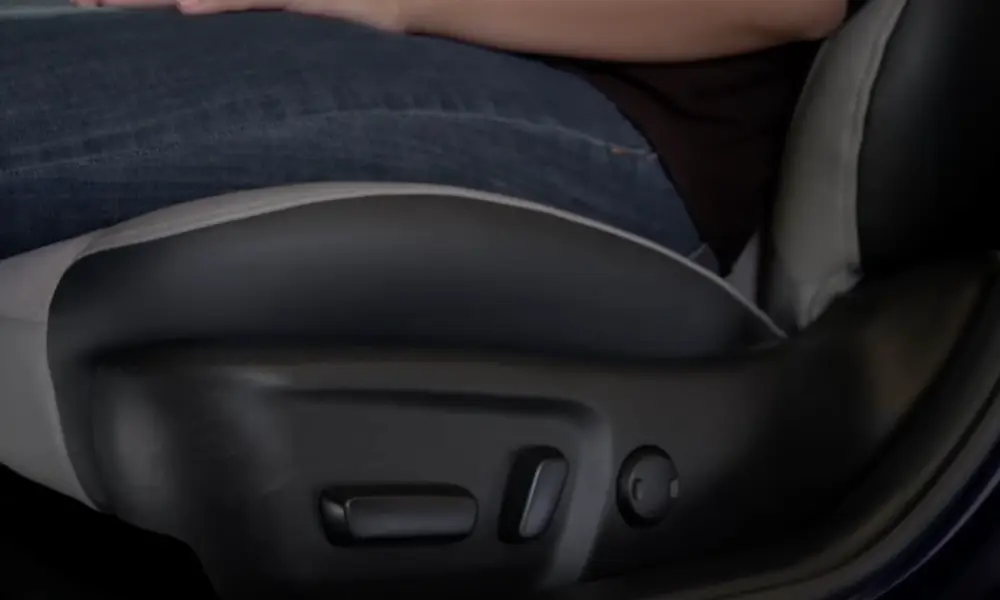Experiencing the Service Brake Assist message on your GMC Terrain can be concerning, especially if you’re unsure why it’s appearing. This warning usually indicates an issue with the brake booster pressure sensor or a problem related to insufficient brake pressure. By understanding the message, you can maintain optimal braking performance and ensure safety while driving. Keep reading to discover solutions that could help solve your problem effectively.
Understanding Service Brake Assist
Service Brake Assist is an important feature in vehicles like the GMC Terrain. This system provides extra braking power when you need it most, especially in emergencies. It ensures that your vehicle can stop quickly and safely. Let’s explore the role, functionality, and notifications related to brake assist.
The Role of Brake Assist in Safety
Brake Assist is designed to help you when you’re in a tight spot. Imagine you’re driving and need to stop suddenly. In such moments, you might not apply the brakes firmly enough. This system senses when you’re in an emergency. It automatically boosts the brake force, reducing stopping distance and preventing possible accidents. Safety is priority number one for Brake Assist, ensuring you and your passengers are protected during sudden stops.
How Brake Assist Works
Understanding the mechanics is key. Brake Assist systems use sensors to determine how quickly you’re hitting the brakes. If you start braking hard and fast, but not hard enough, the system kicks in. It provides extra force to the brakes to help slow down the vehicle faster. This technology combines with the anti-lock braking system (ABS) for better control. In turn, this helps maintain stability and prevents your wheels from locking up during hard braking.
Service Brake Assist Light Explained
When the Service Brake Assist light appears on your dashboard, it’s a signal to pay attention. It means there might be an issue with the brake assist system. Sometimes, it could be a simple electronic glitch. Other times, it might need more serious attention. Your first step should be checking the vehicle’s manual or consulting a professional. Ignoring this light isn’t advisable, as it might affect your vehicle’s safety performance. It’s crucial to address any issues promptly to ensure your braking system is functioning at its best.
Common Issues with the GMC Terrain Brake System
The GMC Terrain brake system can have several issues that affect performance and safety. Understanding these problems will help you maintain your vehicle better and ensure safe driving.
ABS System Concerns
The anti-lock braking system (ABS) in your GMC Terrain is crucial for safe stopping on slippery roads. Problems often stem from faulty ABS sensors, which misread wheel speed.
When this happens, you might notice the ABS warning light on your dashboard. Stopping distance may increase, leading to potential danger. Regular checks and replacements of ABS sensors can help avoid these concerns. If you experience unusual noises during braking, scheduling an inspection is a good practice to prevent severe ABS issues.
Problems with the Vacuum Pump
The vacuum pump plays a significant role in your brake system by providing the necessary vacuum for power brakes. When the vacuum pump fails, you may find it hard to stop your vehicle. The problem often manifests as a stiff brake pedal.
Symptoms like increased effort in pressing the pedal can signal vacuum pump issues. Regular inspection helps prevent complete failures. Poor vacuum pump performance affects the brake booster’s efficiency, requiring more force to stop the Terrain.
Brake Fluid Level and Quality
Brake fluid is vital for the smooth operation of your brake system. If brake fluid levels are low or it has poor quality, your brakes may feel spongy or require more effort to engage. Leaks in the system can lead to low fluid levels.
It’s essential to maintain proper fluid levels and replace the brake fluid as recommended. Contaminated fluid reduces braking power, affecting your safety. By keeping an eye on the fluid’s level and quality, you can prevent unexpected brake failures.
Worn Brake Pads Impact
Worn brake pads are a common issue in the GMC Terrain, often identified by squeaking or grinding noises when braking. This wear reduces the system’s ability to stop your vehicle effectively. If ignored, worn brake pads can damage the rotors, leading to more costly repairs.
Checking brake pad thickness regularly helps avoid these problems. Replacing worn pads promptly ensures your vehicle maintains optimal stopping power.
Brake Booster Functionality
The brake booster assists in reducing the effort needed to apply the brakes. If the brake booster malfunctions, it will feel like you’re pushing down on a hard pedal. This condition significantly affects your GMC Terrain’s braking efficiency.
A failing brake booster might result in hissing noises from the pedal area or a brake warning light. Regular checks are essential to ensure the brake booster functions properly, helping you maintain control during emergency stops. Keeping this component in good condition ensures safe and responsive braking.
Troubleshooting the Service Brake Assist Message
When you encounter a Service Brake Assist message in your GMC Terrain, there are a few key areas to investigate. This guide will walk you through initial checks and more detailed inspections related to the ABS sensor and car battery, as well as how to perform a load test for electrical issues.
Initial Diagnostic Steps
Begin by ensuring your brake fluid is at the correct level. Low fluid can activate the message. Next, check your brake pads for wear. If they appear worn, consider replacing them. Inspect the fuse box for any blown fuses related to the braking system.
It’s also wise to connect a diagnostic tool to see if any error codes appear. This can provide insights into specific issues that may need attention.
ABS Sensor and Its Role
The ABS sensor monitors wheel speed and sends this data to the car’s computer. A faulty ABS sensor can trigger the Service Brake Assist alert. To address this, you should inspect all ABS sensors for signs of damage or dirt.
Cleaning the sensors might resolve the issue if they are dirty. If you find any damaged sensors, replacing them should be your next step. Keep an eye out for error codes related to ABS when you run diagnostics.
Testing the Car Battery
Your vehicle’s car battery plays a crucial role in the braking system. If the battery is weak, it can cause the Service Brake Assist message to appear. Begin by checking the battery connections for corrosion or loose clamps.
Use a multimeter to measure the battery voltage. The reading should be around 12.6 volts for a fully charged battery. If the voltage is low, a battery replacement may be necessary to avoid further issues.
Load Testing for Electrical Issues
Load testing helps identify electrical problems that might trigger the Service Brake Assist message. This process checks if the battery can handle typical electrical demands. First, ensure the battery is fully charged and then connect a load tester.
Apply a load equivalent to half the battery’s CCA (cold cranking amps) rating for about 15 seconds. Observe the voltage drop. If it falls below 9.6 volts, the battery might be failing. Consider replacing the battery if it doesn’t pass the load test to ensure stable electrical performance.
Maintaining Your Brake System for Optimal Performance
Keeping your brake system in good condition is key to ensuring your vehicle’s safety and drivability. Regular checks, maintenance, and understanding component functions like brake pads and ABS are crucial. Let’s explore essential steps to help your brakes perform at their best.
Routine Brake Fluid Check and Replacement
Checking your brake fluid regularly is important for consistent braking. Low or dirty brake fluid can reduce braking efficiency. It’s wise to inspect the reservoir monthly.
If you notice any issues such as a soft or spongy brake pedal, it might be time for a fluid change. Brake fluid absorbs moisture over time, which can lead to corrosion in the brake system. Keep an eye on the fluid levels and condition—clear and light-colored fluid is healthy. Replace it according to your vehicle’s manual or if it appears dark or contaminated.
The Importance of Regular Brake Pad Inspection
Worn brake pads can increase stopping distances and damage other parts like rotors. Listen for squealing sounds when braking, which might mean it’s time to inspect the brake pads.
Regularly checking your pads helps catch wear before it affects safety. Inspect their thickness and replace them if they’re below the recommended levels. This can also prevent grinding sounds that indicate pads are wearing into the rotors. Also, check for any cracking or glazing on the pad surface, which can affect braking performance.
Understanding the ABS System Maintenance
The Anti-lock Braking System (ABS) prevents wheel lockup during braking. It’s crucial to keep this system in top shape for your safety.
Check the ABS warning light on your dashboard—if it lights up, have your vehicle inspected. Regular maintenance involves ensuring sensors are clean and connected properly. Sometimes, dirt or debris can cause sensor issues, which may affect performance. Checking the ABS controller for errors with diagnostic tools can also be helpful.
Power Steering Checks
Though not part of the braking system, power steering assists in controlling your vehicle effectively. Regular checks ensure smooth steering and braking coordination.
Look for signs like difficulty in steering or unusual noises when turning the wheel; these could point to power steering issues. Also, check the power steering fluid level and top it up if necessary. A whining noise could also indicate a low fluid level or a failing pump requiring immediate attention.










